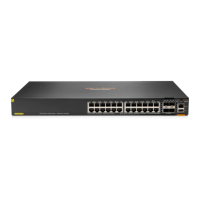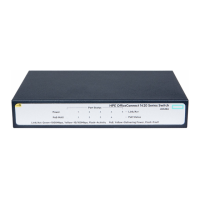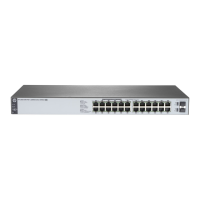242
Configuring many-to-one VLAN mapping in a network with
static IP address assignment
In a network that uses static IP addresses, configure many-to-one VLAN mapping with ARP
snooping.
The switch replaces the SVLAN tag of the downlink traffic with the associated CVLAN tag based on
the ARP snooping entry lookup.
Configuration restrictions and guidelines
When you configure many-to-one VLAN mapping in a network that uses static address assignment,
follow these restrictions and guidelines:
• Before you configure many-to-one VLAN mapping, create the original VLANs and the
translated VLANs.
• Make sure hosts in different CVLANs do not use the same IP address.
• When an IP address is no longer associated with the MAC address and VLAN in an ARP
snooping entry, wait for this entry to be aged out. You can also use the reset arp snooping ip
ip-address command to clear the entry.
• Before you modify many-to-one VLAN mapping, use the reset arp snooping vlan vlan-id
command to clear the ARP snooping entries in each CVLAN.
• To ensure correct traffic forwarding from the service provider network to the customer network,
do not configure many-to-one VLAN mapping together with uRPF. For more information about
uRPF, see Security Configuration Guide.
Configuration task list
Tasks at a glance
Enabling ARP snooping
Configuring the customer-side port
Configuring the network-side port
Enabling ARP snooping
Enable ARP snooping for the original VLANs and the translated VLANs.
To enable ARP snooping:
Step Command Remarks
1. Enter system view.
system-view
N/A
2. Enter VLAN view.
vlan
vlan-id N/A
3. Enable ARP snooping.
arp snooping enable
By default, ARP snooping is disabled.
For more information about ARP
snooping commands, see Layer 3—IP
Services Command Reference.
Configuring the customer-side port
Step Command Remarks
1. Enter system view.
system-view
N/A

